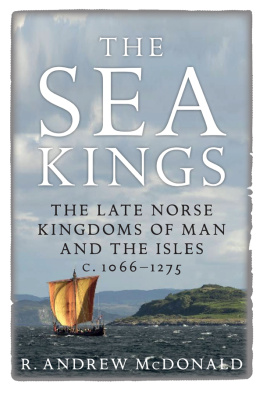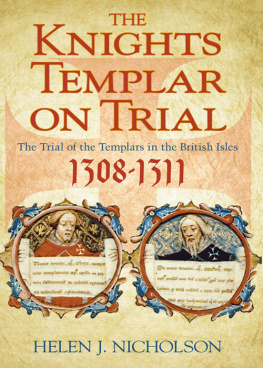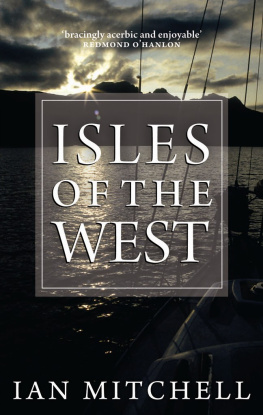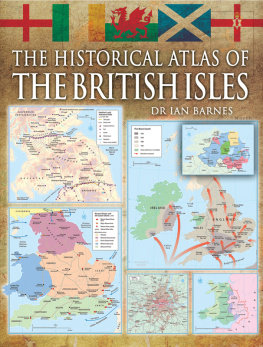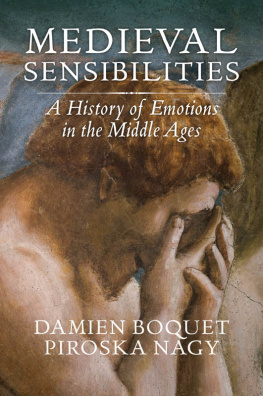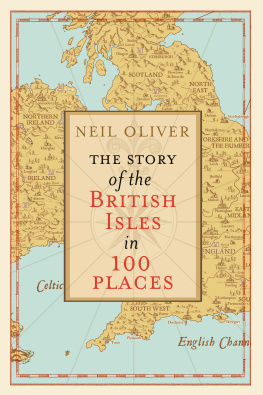EPILOGUE:
Swansongs, 12751305
In the year 1275 rebellion against Scottish overlordship erupted in the Isle of Man. At that time, reports one of our most important sources for the uprising, a set of annals compiled at Furness abbey not long after the events being described, Godfrey, the son (but not legitimate) of Magnus, the former king of Man, landed in Man with some ships. The same annals explain how, upon Godfreys arrival in Man, some of the people rejoiced at his arrival and received him, and some turned round and were grieved; but in a short time he subdued all to himself in fear and affection, and finally they universally and unanimously appointed him their prince. An unnamed fortress in the island is said to have been captured and its keepers put to flight. Godfrey then disposed of the kingdom at his pleasure.
There seems little doubt that Godfrey was, as stated in this account, a son of the last Manx king, Magnus, although it is more difficult to discern whether he was indeed illegitimate or whether this is an aspersion cast by the annalist in an attempt to discredit the rebellion. The northern English Lanercost chronicle states only that he was a son of Magnus whom the Manx had set up to be their king.that the legacy of the Kingdom of Man and the Isles had hardly been forgotten and that a restoration might yet be on the cards. The whole episode offers important insight into Manx perspectives on the Scottish overlordship that had been imposed in the mid 1260s and that was formally acknowledged by the Treaty of Perth.
The Scottish response was, predictably, swift and, as it turned out, overwhelming. King Alexander III of Scotland was furious and immediately summoned an army and fleet from Galloway and the islands. The leaders of the army are named as John de Vescy, John Comyn, Alan son of Thomas, Alexander son of John of Argyll, and Alan son of Ruairi. The identity of some of these men is significant and we shall return to them in due course below. Ninety vessels were dispatched to Man and on 7 October the fleet put into Ronaldsway; according to the annals of Furness the intent was to destroy the island. It appears from information given in the annals of Furness that the battle was fought on St Michaels Isle at the northern tip of the Langness peninsula and in close proximity to the excellent sheltered anchorage at Derby Haven (Ronaldsway) that was apparently utilised by the Scottish fleet. The annals of Furness also provide a little more detail on the battle itself:
A battle was fought; and the Manxmen, unarmed and naked, could not resist the slingers, ballistaries [crossbowmen], archers and armed men, and fled with Godfrey their king. And the others pursuing them cut down and slew man and beast, as many as they could catch, sparing not for sex or place. But Godfrey with his wife and some of his followers escaped, fleeing to Wales.
From this it would appear that King Alexander had brought the best military technology at his disposal to bear against the Manx, and the passage gives the impression of the victory of a well-armed and coordinated host over a poorly armed and hastily organised one, even if it is difficult to believe that the Manx were entirely unarmed and naked. This seemingly bizarre and unbelievable detail might represent another attempt on the part of the chronicler to
Whether they went into battle naked and unarmed or not, it is clear that the Manx suffered an overwhelming defeat. The Furness annals relate that the enemy [i.e. the Scots] aforesaid despoiled the abbey of Rushen and the monks, and sent them away almost naked. And at that time perished miserably all the nobles and the captains, and also the rest of the people whose exact number no one knows. And thus was the land destroyed and despoiled; and the armies retired, returning to their own. The Manx perspective betrayed by these annals is worth pointing out, something that probably reflects the close connections the abbey of Furness enjoyed with the Isle of Man: in addition to the characterisation of the Scots as the enemy, there is also the overall despairing tone of the account of the devastation caused by the expedition, which echoes that of the Manx chronicle.
Contrary to the statement in the Furness annals, someone did in fact claim to know how many Manx had perished in the contest. The Manx chronicles surprisingly brief account of the event, which does not name Godfrey or expand in any way on the information provided by the English sources already noted, does, however, include two verses attributed to a certain rhymster to the effect that:
Ten times 50, three times 10, and five and two did fall,
O Manx race, beware lest future catastrophe you befall.
The sorrowful tone struck by the chronicle clearly reflects indigenous Manx perspective on the Scottish conquest. The reference to the verses of a certain rhymster are a particularly interesting facet of this entry. It was not unusual for a chronicle to incorporate verses, either specially composed for the purpose, or already in existence.
Certainly the Scottish conquest lived in Manx memory: early fourteenth-century legal proceedings remembered Alexander III as having conquered the Isle of Man by the sword (qui Insulam de Manne per ensem conquestabatur). Under these circumstances, it would hardly be surprising if the age of the sea kings had come to be regarded as a golden age for the island, and the miserable tone on which the chronicle takes leave of the dynasty with its account of the events of 1275 gives way to a brief synopsis of the fourteenth-century struggles over the island.
As for Godfrey, the leader of the uprising, it is often asserted that he perished in the battle.
Returning briefly to the Scottish expedition of 1275, two of the leaders of the fleet sent by the Scottish king are named as Alexander fitz John of Argyle and Alan fitz Rother. Behind these names lurk none other than Alexander the son of Ewen of Argyll (d. 1310) and Alan the son of Ruairi, the lord of Garmoran. Both men were therefore members of the MacSorley kindred, the old rivals of the Manx sea kings for hegemony in the Isles: the rivalry some twenty-five years earlier between Magnus of Man and Alexanders father, Ewen of Argyll, over kingship in the Isle of Man in the early 1250s has been noted in
Less than a decade later, the heads of the various branches of the MacSorley kindred again associated with other prominent members of the Scottish nobility. In 1284 they attended a great council held at Scone in the aftermath of the death of Alexander IIIs eldest son, Alexander, and affirmed their support for the kings infant granddaughter Margaret the Maid of Norway as lady and right heir of our said lord king of Scotland. The age of the Hebridean sea kings had passed.
As for the Manx kings, the disappearance of Godfrey son of Magnus into Wales in the wake of his failed rebellion in 1275 is the last glimpse of them that we possess, although not quite yet of the dynasty itself. It will be recalled that a daughter of Ewen of Argyll named Mary had married King Magnus of Man sometime before his death in 1265.
But the story does not quite end with the death of Mary in 1302. In the turbulent era of the Scottish succession crisis and the Anglo-Scottish conflicts of the late thirteenth and early fourteenth centuries, two claimants to the Kingdom of Man and the Isles briefly emerged from the mists. Both were female, and both professed to be members of the Manx dynasty. One was Aufrica de Connacht, who claimed to be a kinswoman and heiress (consanguinea et haerede) to Magnus, formerly king of Man, although her exact relationship to Magnus remains murky. Her name, shared with another famous Manx lady named Affrica Affrica Godredsdottir, who married John de Courcy about a century earlier (c. 1180) has been taken to indicate that she was a granddaughter of her namesake, but while this is likely, it is not certain.

